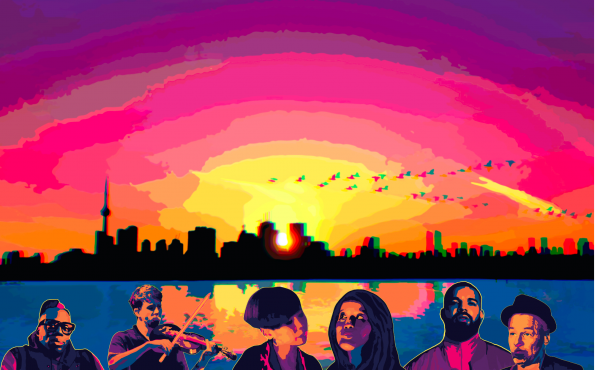
In today’s Star, Christopher Hume gives column-inches to Kyle Rae’s push for investment in “the arts.” Interestingly, in Rae’s push (or maybe, to be fair, what can be read just in Hume’s description of it) features exactly zero mentions of investments in “artists.” You know, those people who make “the arts”? Yeah. They somehow seem to have escaped the attention of councillors and bureaucrats, even as the city yearns for a more artistic image with which to boost its tourism and revenues.
Interestingly, Hume’s column was published just as I was getting ready to post on a recent public art project that addresses this discrepancy between “supporting art” and “supporting artists” in the Queen West area. The project, manifested on posters throughout the nabe, is notable for its all-caps headline, “A proposal for a tax in support of Toronto artists.” The rest of the poster, which is mainly a small-print essay by Art Gallery of York University director Philip Monk, suggests that “Since artists never benefit economically from the neighbourhoods they reinvent, some honorific return might be made to them by a tax, let’s say, on Queen Street shopping bags.”
Monk’s proposal is only partly tongue-in-cheek. The rest of his essay essentially argues that “The art community provides the foundation of the argument for a ‘creative city’ but is dispensed with in its realization.” In other words, artists change neighborhoods so that they increase in real estate values — what councillors like Rae hope will happen when they tout the economic advantages of a “creative city.” The problem is that once the artistry of these “creative citizens” has maximized economic development, they are displaced by the high real estate prices, i.e. gentrification. And they get few to no returns for the economic gains they have produced, whether those returns are rent protection, grants, or just a plain old fashioned “thank you.” (The AGYU’s own gift shop uses bags that tout “The Queen Street art community made this town” — a bit of a diss to John Graves Simcoe, not to mention hardworking immigrants from all over the world, but a nice gesture nonetheless.)
I don’t think this “marginalization of artists” is the worst problem we are facing as a city, but it is an infuriating trend given the whole “Live With Culture” campaign. (The logical gaps in this campaign are also skewered by Jared Mitchell and R.M. Vaughan’s “Live Without Culture” artwork.)
If you want to see a copy of the poster, click here and then on the poster image.


